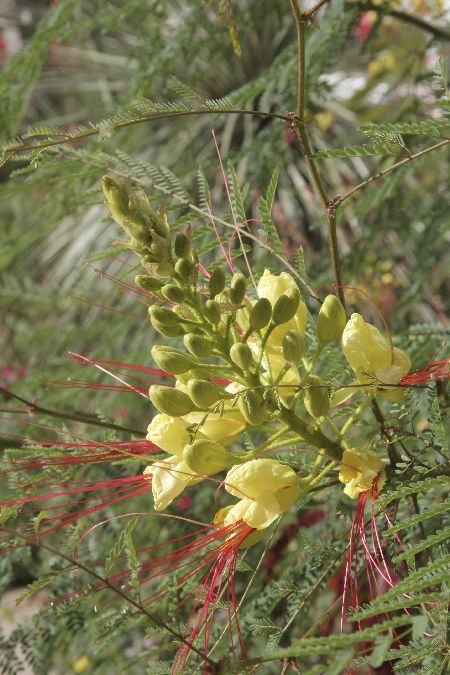
Caesalpinia gilliesii
Yellow Bird of Paradise
Yellow Bird of Paradise provides a tropical effect in the landscape. Red stamens on decorative yellow flowers are dramatic and exotic. Plant form is upright and open. Canopy coverage: 28 square feet.
[Read More]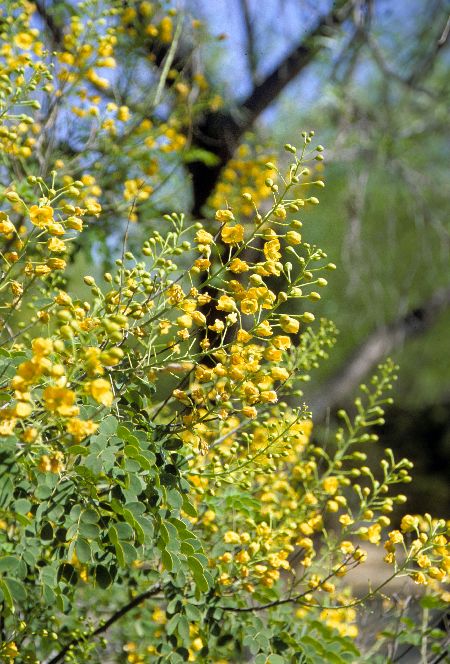
Caesalpinia mexicana
Mexican Bird of Paradise
The flowers of Mexican Bird of Paradise are produced in large dramatic spikes. Where adapted to cold, it can be grown as small tree. Upright and somewhat open appearance. Canopy coverage: 79 square feet.
[Read More]Caesalpinia pulcherrima
Red Bird of Paradise
Provides a tropical effect in the landscape with its dramatic and exotic flowers. The species produces orange flowers; yellow-flowering forms are also available. Plant form is rounded and open. Canopy coverage: 28 square feet.
[Read More]Calliandra californica
Baja Fairy Duster
The striking red powderpuff flowers of Baja Fairy Duster bloom through the growing season. Fine-textured leaves reinforce the subtropical effect. Canopy coverage: 28 square feet.
[Read More]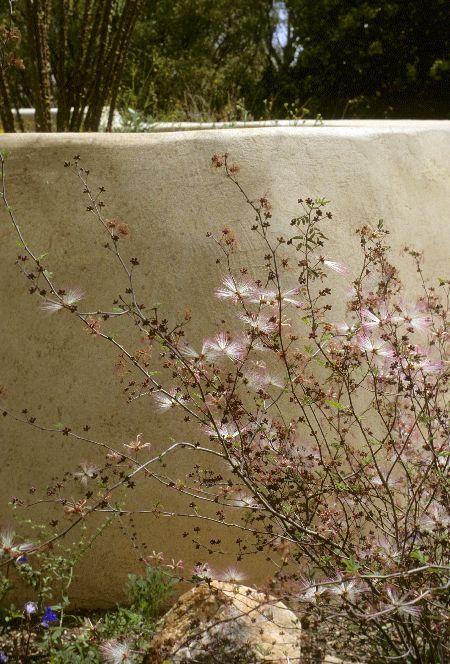
Calliandra eriophylla
Pink Fairy Duster
The delicate flowers of Pink Fairy Duster are attractive rose-pink in color. It has an airy rounded form. Canopy coverage: 7 square feet.
[Read More]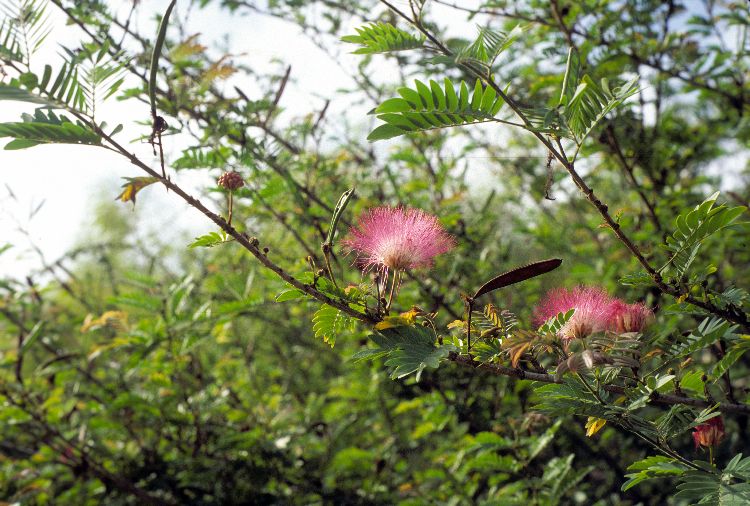
Calliandra haematocephala
Pink Powder Puff
Pink Powder Puff is a cold-tender shrub, but worth the effort where it is adapted. It is helpful to utilize warm microclimates such as against a south-facing wall when locating. Primary feature is the large, 2- to 3-inch, pink puffball flowers. Canopy coverage: 79 square feet.
[Read More]Callistemon citrinus 'Jeffers'
Purple Bottlebrush
Purple Bottlebrush is broadly adapted to less-than-ideal conditions of high heat, cold temperatures and poor soils. Can be pruned to become a small tree. If you are familiar with Bottlebrush, you will recognize the distinctive flowers that look like old-fashioned bottle brushes. These are reddish purple fading to lavender. Canopy coverage: 20 square feet.
[Read More]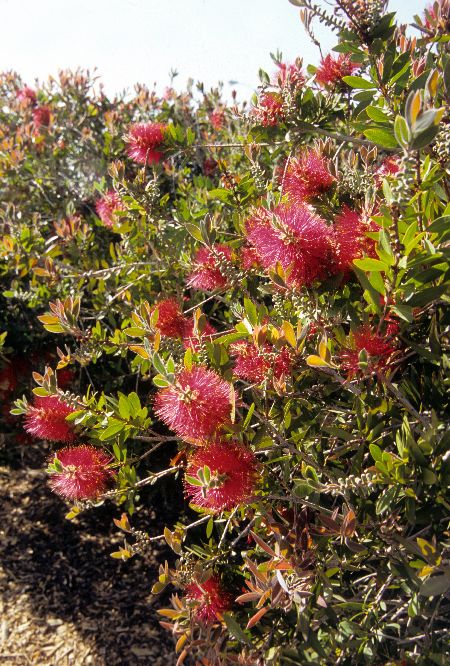
Callistemon citrinus
Lemon Bottlebrush
Lemon Bottlebrush is very accepting of pruning and shaping to become a shrub, screen or patio tree. New growth in spring has interesting coppery color. Rich red bottlebrush-shaped flowers are naturally striking. Canopy coverage: 177 square feet.
[Read More]Callistemon viminalis 'Little John'
Little John Bottlebrush
This hybrid native to Australia is a compact version of the species. Growing in a compact form, it produces the same bottlebrush-shaped flowers over a long period. Makes a mounding groundcover when planted in a mass. Canopy coverage: 7 square feet.
[Read More]Carissa macrocarpa
Natal Plum
Spiny stems make this a suitable barrier plant. Star-shaped flowers are fragrant, followed by red or purple fruit. Accepts some shade. Many improved selections are available, including 'Boxwood Beauty', 'Green Carpet', 'Fancy' and 'Tuttlei'. Canopy coverage: 50 square feet.
[Read More]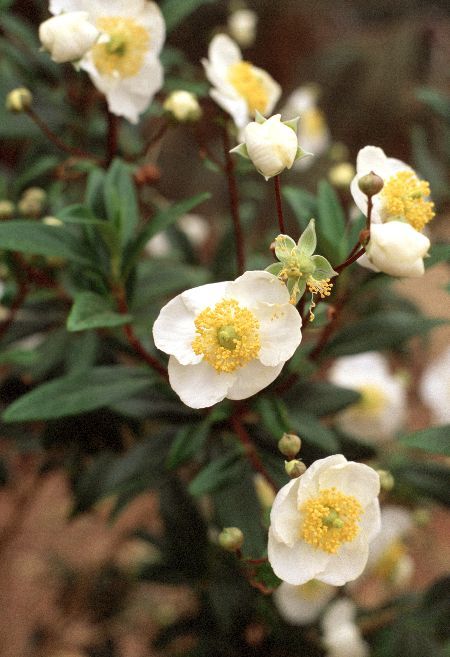
Carpenteria californica
Bush Anemone
This shrub is a popular California native. It does best with afternoon shade in hot inland valleys and desert regions. Narrow, dark green leaves to 3 inches long are whitish underneath. Flowers are fragrant, and large, to 3 inches across. Look for the selection 'Elizabeth'. Canopy coverage: 64 square feet.
[Read More]Caryopteris x clandonensis
Blue Mist Spirea
Blue Mist Spirea grows as a mounding, rounded shrub with upright branches. it produces profuse amounts of blue flowers in mid- to late summer. Plant may die to the ground in winter. Prune back to less than 1 foot high in spring prior to new growth. Accepts sandy to clay soils. Canopy coverage: 7 square feet.
[Read More]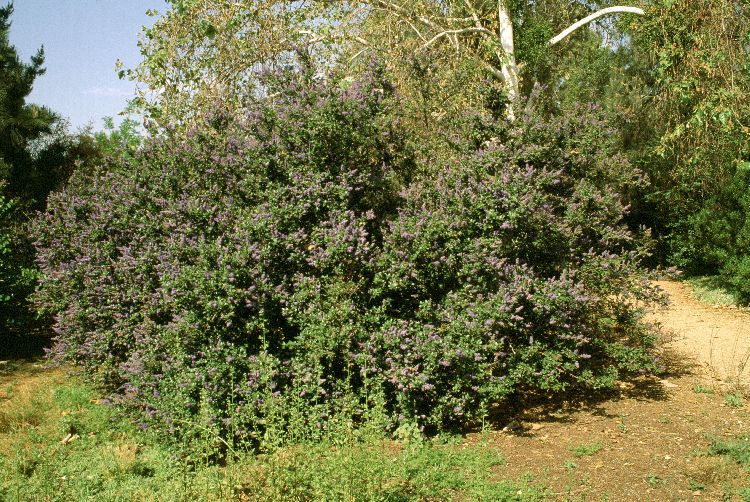
Ceanothus 'Frosty Blue'
Frosty Blue California Lilac
One of the most accommodating Ceanothus, accepting a wide range of soils, exposure to the sun and irrigation. Can be trained to become a small tree. Avoid watering in summer, however, except to establish new plants the first year. Canopy coverage: 50 square feet.
[Read More]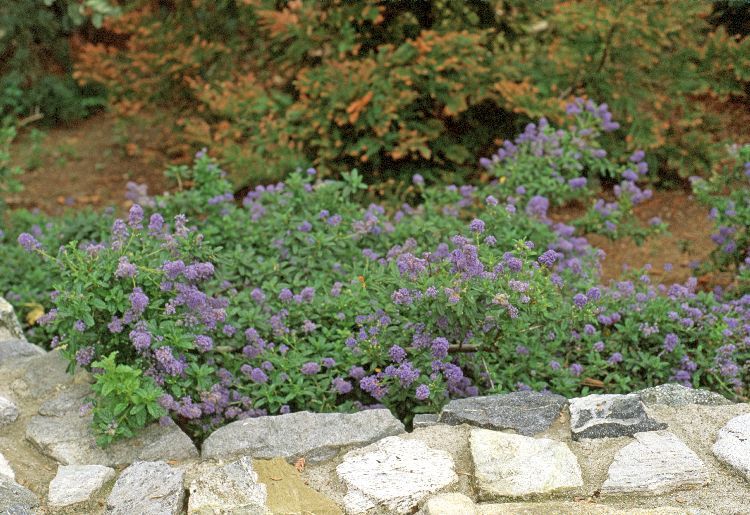
Ceanothus 'Joyce Coulter'
Joyce Coulter Ceanothus
Excellent choice for a wide-spreading, mounding groundcover. Listed as spreading to 12 feet but can spread even further. May require some pruning to maintain low, groundcover profile. Best in partial shade in hot inland areas. Known to be accepting of summer irrigation, but avoid too much water during this time. Canopy coverage: 113 square feet.
[Read More]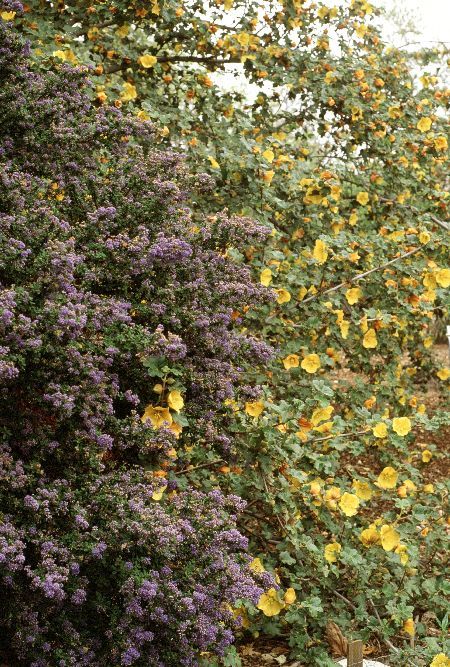
Ceanothus 'Ray Hartman'
Ray Hartman Wild Lilac
The most popular of the large Ceanothus, due to its handsome appearance and acceptance of a range of soil types, drought, as well as both coastal and inland climates. Fast-growing, it can be trained to become a small tree in a matter of years. Avoid watering in summer, however, except to establish new plants the first year. Canopy coverage: 314 square feet.
[Read More]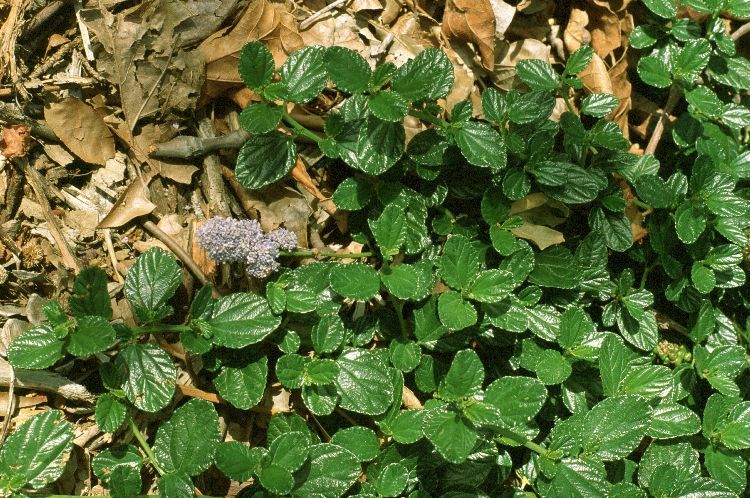
Ceanothus griseus horizontalis 'Yankee Point'
Yankee Point California Lilac
Grow 'Yankee Point' as a groundcover or low, mounding shrub. Excellent for stabilizing slopes. Locate where it will receive some afternoon shade and provide additional water in hot inland regions. If you live in deer country, know that they love it. Canopy coverage: 79 square feet.
[Read More]Ceanothus tomentosus
Woolly Leaf Mountain Lilac
A chaparral shrub that is useful as a large screen or divider. Flower color varies from blue to purple to white. Prefers some shade in hot inland regions where it tends to go dormant during summer. Canopy coverage: 50 square feet.
[Read More]Celtis occidentalis
Western Hackberry
Adapted to grow in a wide range of climates, Western Hackberry is also known as Common Hackberry. Grows as a large shrub or tree—give it more water for tree form. Best to plant from containers rather than bare root for better establishment. Yellow fall color and small red to purple fruit are attractions. Canopy coverage: 1,963 square feet.
[Read More]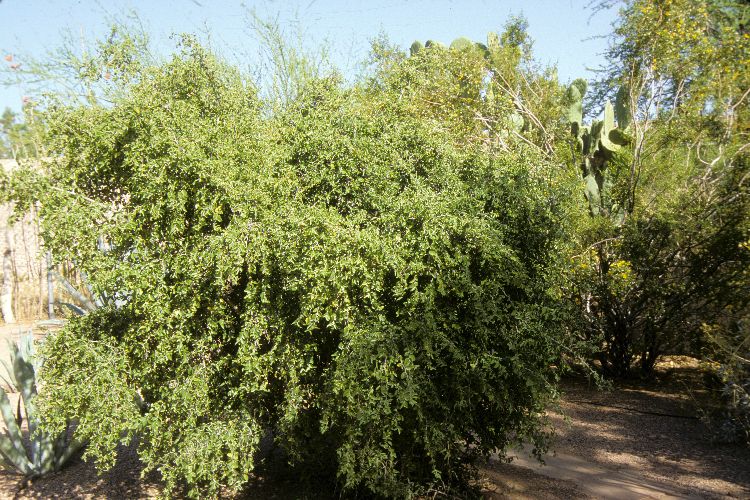
Celtis pallida
Desert Hackberry
This shrub has spiny branches that intertwine, which makes it an excellent barrier or security plant. Evergreen except with very cold temperatures. Birds flock to the berries in winter. Canopy coverage: 79 square feet.
[Read More]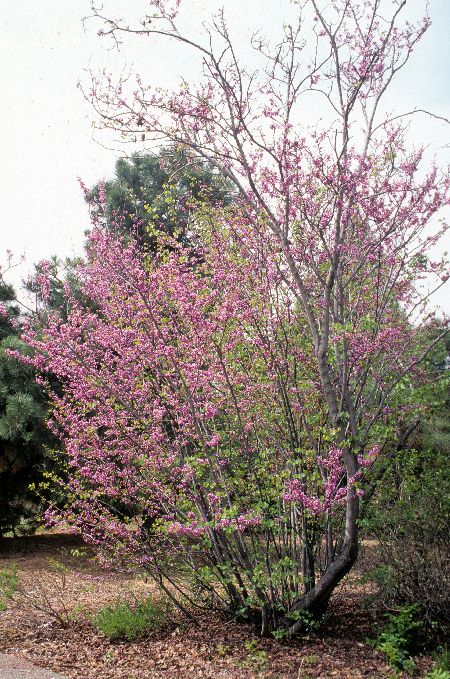
Cercis occidentalis
Western Redbud
Grow Western Redbud as a tree or shrub. Established plants are cold hardy, but young plants may need cold protection when temperatures drop below 20 degrees during their first few years. Flowering is improved when winter cold drops below 28 degrees. Canopy coverage: 177 square feet.
[Read More]Cercocarpus betuloides
Western Mountain Mahogany
This is a chaparral shrub or small tree, adapted to a range of conditions and water applications. Accepts summer water. Useful as a screen, hedge or foundation plant. Flowers are small and not too showy. The seeds, which are adorned with feathery tails, add interest. Canopy coverage: 79 square feet.
[Read More]